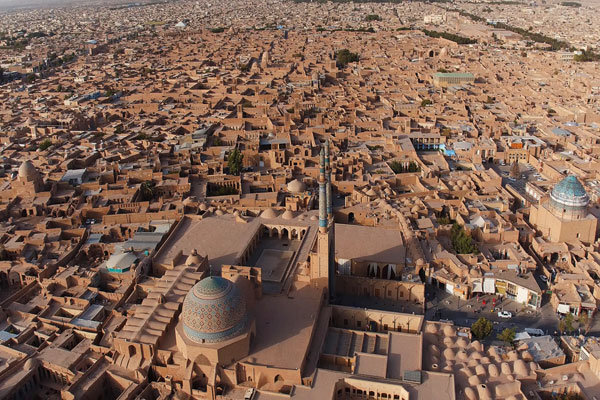Endowed houses and cisterns in UNESCO-listed Yazd need restoration

TEHRAN – The historical city of Yazd, which is a UNESCO World Heritage embraces about 500 endowed houses and water reservoirs, a considerable number of which have been left unused.
“There are approximately 500 endowed houses and water reservoirs of historical significance in the city of Yazd, many of which require maintenance and restoration,” Fatemeh Haqirosadat who presides over the tourism commission of the City Council of Yazd, said on Tuesday.
Collaboration between the municipality, the Endowments Department, and the Cultural Heritage Administration is underway to maintain, preserve, and utilize these houses and water reservoirs within the historical fabric, she explained.
Referring to a recent meeting of the council's tourism commission, she mentioned, “It was proposed in this session to restore endowed water reservoirs through a memorandum of understanding between the municipality and endowments, and then allocate them to the municipality for tourism purposes.”
Haqirosadat added, “About 106 endowed water reservoirs have been identified by the Endowments Department in Yazd, out of which 20 have been allocated for tourism purposes thus far.”
Moreover, 400 endowed houses have also been identified in Yazd, with 100 of them being usable and the rest needing reconstruction. However, with the cooperation of the municipality and endowments in their restoration, these houses can be used for charitable purposes, she said.
The head of the council's tourism commission continued, “It is also necessary to establish cultural and sports complexes in all historical areas." It was agreed to discuss with the Endowments Department, regarding the allocation of some endowed places for the cultural and sports usage of citizens.”
Earlier in July, hundreds of people including tourism officials, cultural heritage experts, artists, and travel insiders attended a ceremony to mark the fifth anniversary of Yazd’s registration on the UNESCO World Heritage list. Among the attendees were Cultural Heritage, Tourism and Handicrafts Minister Ezzatollah Zarghami, Yazd province’s governor-general Mehran Fatemi, and several ambassadors and diplomats, to name a few. “Yazd is the sole Iranian city registered as World Heritage by UNESCO,” Fatemi said, addressing the ceremony.
Addressing the ceremony, the tourism minister reminded attendees of the peaceful spirit of the people in Yazd, adding: “According to UNESCO, Yazd can be chosen as a model for peace in the world.” “I have not seen anywhere like Yazd where its people are amazingly determined to support and preserve the historical core of their hometown,” Zarghami said.
Cultural heritage experts believe Yazd is a living testimony to the intelligent use of limited available resources in the desert for survival. Water is brought to the city by the qanat system. Each district of the city is built on a qanat and has a communal center. Furthermore, the use of earth in buildings includes walls and roofs through the construction of vaults and domes. Houses are built with courtyards below ground level, serving underground areas. Wind-catchers, courtyards, and thick earthen walls create a pleasant microclimate.
The historical core of Yazd is chockfull of mudbrick houses, bazaars, public bathhouses, water cisterns, mosques, synagogues, Zoroastrian temples, and centuries-old gardens. From the divine point of view, the city enjoys the peaceful coexistence of three religions: Islam, Judaism, and Zoroastrianism.
Yazd is home to numerous qanats which have supplied water to agricultural and permanent settlements for thousands of years. The man-carved underground qanat system relies on snow-fed streams flowing down the foothills of surrounding mountains. The earliest water supply to Yazd is estimated to date from the Sassanid era (224 to 651 CE). However, many others have been continually repaired and used over time, and most surviving Ab-Anbars (traditional mudbrick cisterns) can today be traced to the late Safavid and Qajar periods.
The Yazd Water Museum is a must-see destination for those interested in learning about the brave men who built such underground aqueducts in the past. Located in a restored mansion with a visible qanat running underneath, the museum offers its visitors a fascinating glimpse into the hidden world of qanats through a series of photographs, exhibits, and architectural drawings. It represents nearly 2000 years of unique irrigation structure that has been in operation, yet describes the drilling of mother wells and associated underground water networks stretched to the ancient city.
AFM
